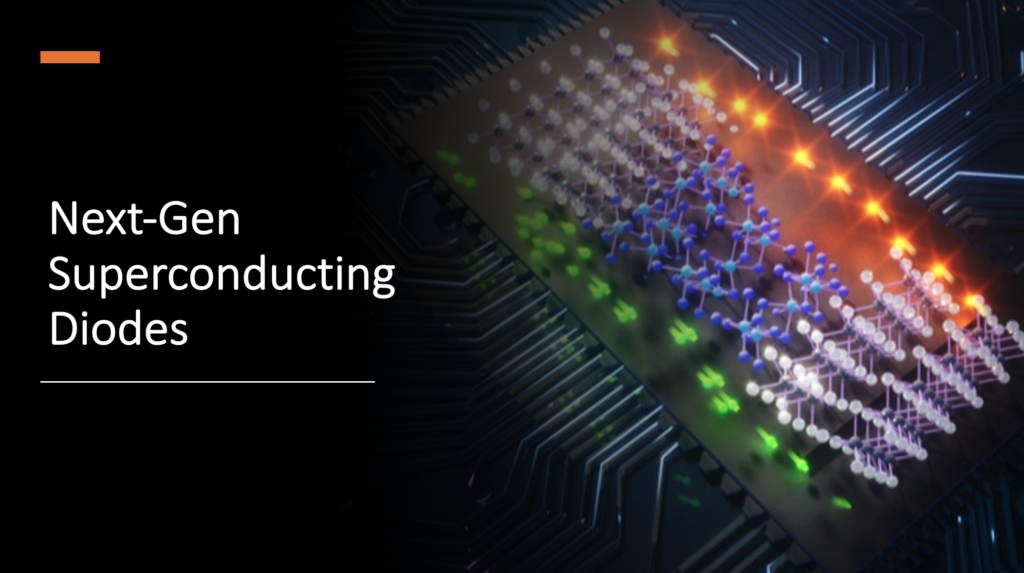Superconductivity has long been heralded as one of the most fascinating phenomena in physics, underpinned by the ability of certain materials to exhibit zero electrical resistance at critically low temperatures. This revolutionary characteristic doesn’t merely enhance ordinary electrical systems; it paves the way for entirely novel devices that could transform various technological landscapes. Among these advancements is the superconducting diode, a device that promises to redefine electronic circuitry and signal processing.
Defining Superconducting Diodes
At its core, a superconducting diode is an electronic component that allows current to flow in one direction while blocking it in the opposite direction, thereby exhibiting nonlinear characteristics akin to conventional diodes. However, the distinctiveness of superconducting diodes lies in their operational principles, rooted in quantum phenomena and intricate material science. By leveraging the unique properties of superconductors, such diodes can achieve exceptionally high switching speeds and power efficiency, significantly outperforming their classical counterparts.
Theoretical Framework of Operation
The operational mechanics of superconducting diodes hinge on the principles of Josephson junctions, named after the physicist Brian Josephson, who unraveled their fundamental characteristics in the 1960s. These junctions comprise two superconductors separated by a thin insulating layer. When a current is applied, Cooper pairs—paired electrons that enable superconductivity—can tunnel through the insulator, permitting a flow of supercurrent that is highly sensitive to the applied voltage. This quantum tunneling effect sets the backdrop for the diode’s unique functionality, allowing for rectification, or the conversion of alternating current (AC) to direct current (DC), with virtually no resistive losses.
Advancements in Material Science
The leap toward next-generation superconducting diodes has been facilitated by advancements in material science, particularly the exploration of high-temperature superconductors. Materials such as yttrium barium copper oxide (YBCO) and iron-based superconductors have yielded promising results in maintaining superconductive states at temperatures that, while still extremely low compared to ambient conditions, are markedly higher than their traditional counterparts. This leads to enhanced practicality for applications and reduces the cooling costs associated with operating such devices.
Comparative Benefits Over Conventional Diodes
Superconducting diodes offer several advantages over conventional silicon-based diodes. First, they exhibit an extraordinary decrease in energy loss due to their zero-resistance nature. Second, they can achieve near-instantaneous switching capabilities, making them suitable for applications in ultra-fast computing and communication technology. Additionally, the high current density of superconducting diodes allows them to handle more significant power loads compared to their traditional counterparts, thus opening avenues for innovations in power systems.
Broadening Base of Applications
The implications of superconducting diodes extend across various domains. In the realm of digital computing, they promise to accelerate data processing speeds dramatically, pushing the boundaries of current technology. Quantum computing, a field predicated on the principles of quantum mechanics, stands to gain immensely from the integration of superconducting diodes as qubits can leverage the unique properties of superconductivity to perform complex calculations at unprecedented speeds.
Telecommunications, too, could benefit. The rapid switching and enhanced signal integrity from superconducting diodes may lead to more efficient data transmission, minimizing latency and maximizing throughput. As the demand for high-speed internet and data services proliferates, the importance of minimizing energy consumption while maximizing performance becomes critical.
Challenges on the Horizon
Conclusion: A New Era of Electronics
The potential of superconducting diodes transcends mere theoretical curiosity. With their unique operational characteristics, coupled with the ever-accelerating demand for efficient electronic components, these devices may soon shift paradigms in numerous fields. In an era characterized by rapid technological advancements, the superconducting diode stands not only as a symbol of innovation but also as a testament to the unyielding pursuit of knowledge within the realms of physics and material science. As research continues to break new ground, the curiosity piqued by superconducting diodes assures not just a glimpse into the future of electronics but also an invitation to reimagine the possible dimensions of technological achievement.












